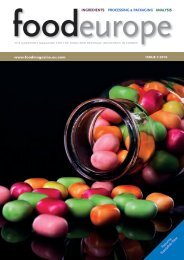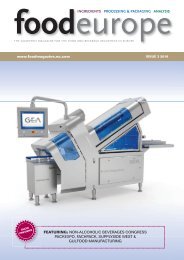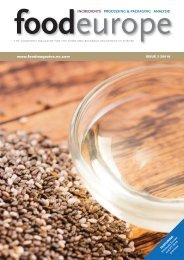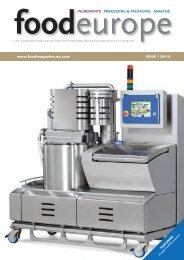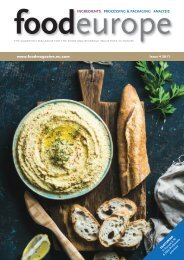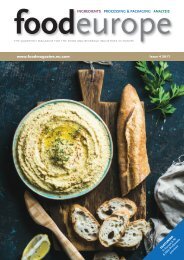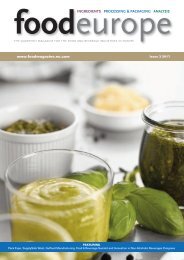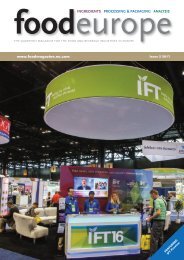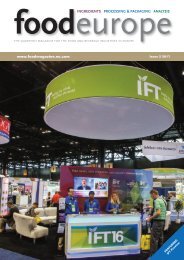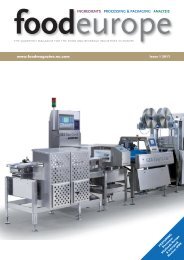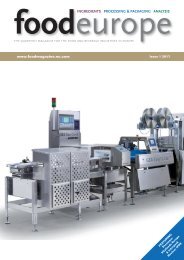Issue 4 2018
Create successful ePaper yourself
Turn your PDF publications into a flip-book with our unique Google optimized e-Paper software.
analysis & control<br />
53<br />
Olam calls for urgent international<br />
cooperation to reduce major greenhouse gas<br />
footprint of rice production<br />
Urgent action is needed by the agri-sector along with brands, retailers, financial institutions,<br />
scientists and governments to implement solutions to limit methane emissions from rice<br />
production, while improving farmer livelihoods and food security. This has to take into account<br />
that many rice consumers are unable to pay more.<br />
At the 5th International Rice<br />
Congress in this October, Sunny<br />
Verghese, Co-Founder and Group<br />
CEO of Olam, one of the world’s<br />
largest rice traders, called on<br />
all stakeholders to advance the<br />
implementation of the Sustainable<br />
Rice Platform (SRP) Standard<br />
which promotes climate-smart<br />
practices. To achieve real scale,<br />
a raft of additional measures<br />
such as financial market support,<br />
reduced tariffs and freeing up<br />
capital by promoting the benefits<br />
of sustainable rice to more<br />
affluent consumers, are required.<br />
Mr Verghese explained, “Rice<br />
production emits the same level<br />
of CO 2<br />
equivalent as Germany<br />
through methane emissions. 1<br />
But climate change mitigation<br />
cannot be a trade-off that hurts<br />
the farmers and communities who<br />
depend on rice for income and<br />
sustenance. This is especially so<br />
when rice is the largest staple<br />
crop in the world, feeding half of<br />
humanity. We must re-imagine the<br />
whole supply chain if the world<br />
is to become carbon neutral by<br />
2050.” 2<br />
Global Head of Rice at Olam,<br />
Devashish Chaubey, said, “Our<br />
programmes with the Thai Rice<br />
Department, development agency<br />
GIZ 3 and others prove that the<br />
SRP Standard works. 4 Together,<br />
we are aiming to reach 150,000<br />
farmers by 2023 in Asia and<br />
Africa. Yet, this represents a<br />
mere 0.1% of total global rice<br />
farming households. Greater scale<br />
requires more impactful action by<br />
the whole of the rice sector.”<br />
What’s wrong with rice?<br />
Rice is one of Southeast Asia’s<br />
biggest crops and the financial<br />
backbone for millions of farmers<br />
across the region. 5 As highlighted<br />
by the recent IPCC global<br />
warming report, the yields and<br />
nutritional value of rice face net<br />
reductions should temperatures<br />
rise.<br />
Consequently, this will impact<br />
millions of farmers and families,<br />
particularly those on low incomes.<br />
Yet rice is also a leading cause<br />
of climate change. Methane, a<br />
greenhouse gas (GHG) which is<br />
up to 34 times more potent than<br />
carbon dioxide, 6 is emitted as a<br />
issue four <strong>2018</strong> www.foodmagazine.eu.com




